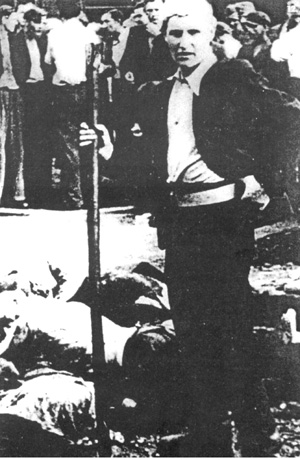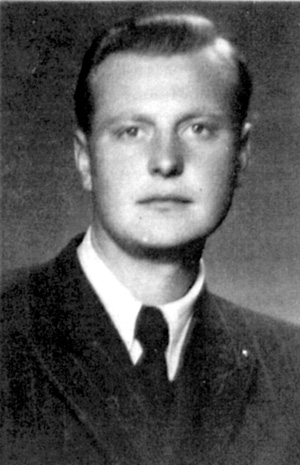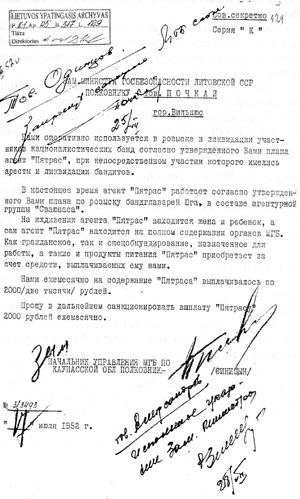I tend to agree that the story of the young man standing on a pile of corpses and playing the Lithuanian anthem has a strong aroma of fish about it, and its fabrication seems confirmed by Vodzinskas, but I am puzzled by Michael Mills' reference to the German witness Röder, as to whom I can find no reference in any of the sources which have been cited. In my copy of The Good Old Days the story of the young man and the anthem is told by the photographer Gunsilius, who states that he arrived in Kovno on the 25th and saw the massacre that day - not on the 27th, two days later, when Oberst von Bishoffshausen states he saw the young man in action. Yet according to Vodzinskas the incident he himself survived occurred on the 27th, when he claims 75 Jews were beaten to death, which number is close to the 70 Jews which Eliezer Zilber claims, in the site referred to by Peter H, were killed at the garage; both indicating that the victims consisted only of Jews, which is the point specifically denied by Alexandras Bendinskas in the source initially supplied by Mr. Mills at the commencement of this thread.michael mills wrote:Here is an interesting extract from this site:
http://www.hagalil.com/archiv/99/12/litauen.htm
So it seems that the tale told by the German witness Röder was indeed a "lurid embellishment" (although he did get the date right).Es gelang Bruzas, den einzigen Überlebenden des Massakers an Juden in der Kaunasser "Lietukis"-Garagenanlage am 27. Juni 1941, den 74-jährigen Vaclovas aus Kaunas Vodzinskas zu finden. Vodzinskas bestritt vor der Fernsehkamera, daß junge Litauer 75 Juden mit Stangen und Metallbändern zu Tode geprügelt hätten und anschließend auf den Leichenberg geklettert seien, um auf dem Akkordeon die litauischen Hymne zu spielen. Vodzinskas sagte, er habe mit eigenen Augen gesehen, wie man den von der Eisenbahn herankommandierten betrunkenen Männern befohlen habe, den "Marsch der Juden von Slobodka" zu spielen. Die Männer, so Vodzinskas, hätten "irgendsoeine Polka gespielt und sind weitergegangen".
My translation:
Bruzas [a journalist for Lietuvos Rytas TV] succeeded in finding the sole survivor of the massacre of Jews in the Kaunas "Lietukis" garage on 27 June 1941, the 74-year-old Vaclovas Vodzinskas from Kaunas. In front of the TV camera Vodzinskas denied that young Lithuanians had beaten 75 Jews to death with poles and metal bars and afterwards climbed onto the pile of bodies to play the Lithuanian National Anthem on the accordion. Vodzinskas said that with his own eyes he had seen how drunken men ordered up from the railway had been commanded to play the "March of the Jews of Slobodka". According to Vodzinskas, the men had "played some such polka and then gone away".
The young blond man was indeed at the scene, and he did strike with some sort of pole at least one of the men (already dead?) lying in the street, and he did pose for a photograph; those things are proved by the photographs themselves.
But according to the testimony of Vodzinskas, the tale that the young man then stood on the bodies to play the Lithuanian National Anthem is a fabrication, and a gross distortion of the fact that a song was sung by a group of men.
So a certain confusion still reigns, as to dates as well as to constitution of the victims. But I feel my theory of the possibility of 2 or more incidents may be slightly enhanced by Vodzinskas' statement, and my conviction of the questional reliability of eye witness testimony reconfirmed.
Regards, Kaschner


